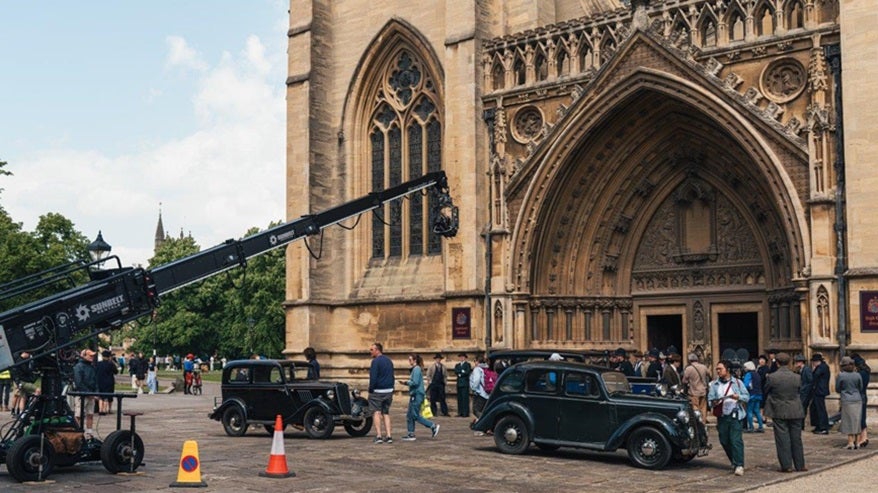Why MEWPs Safety is So Important
Mobile Elevated Work Platforms (MEWPs) such as Genie booms, ‘cherry pickers’ and scissor lifts, and Material Handling Equipment (MHE) are commonly used in TV and film production for lighting, set support and other uses.
In a drama production in February this year, two genie booms rigged with 20 x 20 frames on a drama location, were blown over and brought down a third in an unexpected strong gust of wind.
Luckily no one was injured and the production had multiple controls for working with MEWPs in place including:
– Ensuring that exclusion zones were put in place around the machines when elevated;
– Checks on operators to ensure that they were suitably trained;
– Operating the MEWPs in line with manufacturers guidelines and best industry practice;
– Use of hand held anemometers to monitor wind speeds;
– Checking the expected weather and wind speeds the day before shooting;
– Frames were rigged by competent and experienced riggers using accepted working practises.
The incident was investigated by the HSE who decided not to prosecute in this case, but several key lessons were identified in the investigation and additional measures have been put in place by the production for future shoots using MEWPs.
We advise all productions and clients to do the same. The key points are:
Specific limits – the safe working limits for the specific MEWP/MHE being used must be known and adhered to. This should include the reduced wind speeds when items such as frames are attached. This information is available from manufacturers for some models, but not for others so you need to ensure your use is safe and be able to demonstrate that in the event of an accident.
Weather Information – when MEWP/MHEs are being used in exterior locations detailed information on expected wind conditions should be obtained over and above the normal reporting for production call sheets. Attention should also be paid to how wind is affected around large buildings.
Monitoring of wind speeds – when lifts are elevated wind speeds must be monitored from the highest and most prominent point rather than at ground level. This should be done using an anemometer that can be mounted on the platform and then read from the ground rather than using hand held devices at ground level.
Sufficient crew – enough crew should be available at all times to lower the MEWPs quickly if the wind increases.
Wind Speed Recording – productions should have a way of recording wind speed on a regular basis by using a Wind Speed register or similar system. Daily records should be kept identifying times when the equipment was lowered as a precaution due to wind. These instances should also be notified to senior management.
If you require more advice on the safe use of MEWP/MHEs or working at height, please get in touch.
Share this Article















